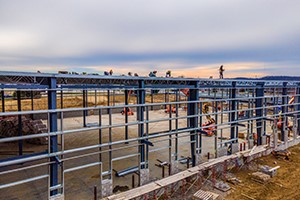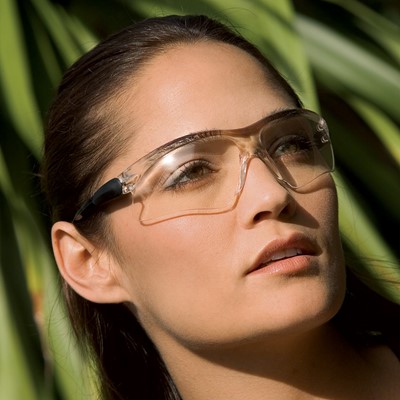What is a Leading Edge SRL and How Does It Protect Against Falls?

Fall protection is an essential aspect of any job at height, but different working situations require different safety measures. For work involving a leading edge, a special Self-Retracting Lanyard is needed to ensure worker safety.
What is a leading edge? According to the Occupational Safety and Health Administration (OSHA), it’s “the unprotected side and edge of a floor, roof, or formwork for a floor or other walking/working surface (such as a deck).” This is found in many industries, but steel erection and deck laying are common examples.
In many cases of leading-edge work, a fall protection system will be anchored at the worker’s foot level, behind the worker. This means that a fall over the edge of the building comes with several specific hazards, as well as changes aspects of a fall. Leading edge SRLs are designed to counteract these dangers.
- Fall Distance: An increased distance is needed for fall clearance, due to foot-level anchoring as opposed to shoulder height or overhead. Additional clearance is needed.
- Lock-Up Speed: SRLs react to a fall when the lifeline accelerates at a certain velocity, typically 4.5 ft/second. Increased fall distance means it takes longer to reach this lock-up speed.
- Fall Arrest Forces: Falling farther increases the impact on the body, requiring additional energy-absorbing devices.
- Swing Hazards: A lifeline over a sharp edge can swing more, causing a sawing action over a sharp edge that can damage the line.
Requirements for Leading Edge
The American National Standards Institute (ANSI) has developed the Z359 Fall Protection standard, which states that for an SRL to qualify as Leading Edge, it must be tested on a sharp steel edge with a radius of 0.005” (0.127 mm). This edge is changed out for every single test. It must also meet the same performance criteria as all Class 1 and 2 self-retracting devices:
- • Maximum Arrest Force: 1,800 lb.
- • Average Arrest Force: 1,350 lb.
- • Arrest Distance: 42”
- • Can withstand a 3,600 lb. static load for 1 minute, or an 1,800 lb. static load if the SRL doesn’t have an internal braking system.
Class 2 Leading Edge SRLs also must pass a Dynamic Performance Test that involves dropping a test mass of 310 lb. over an edge with a 10-second, post-fall swing.
Perhaps the most important requirement of a Leading Edge SRL is that it includes a permanent energy absorber, or shock pack, integral to the connector’s lifeline and connected to the user’s body. This is because a fall over a leading edge would cause a kink in the line, impeding the ability of a shock pack to absorb energy if it was on the anchorage side, or if it was just an accessory shock pack. Two things can happen at this point: the worker might exceed the OSHA-regulated limit of 1,800 lb. of arrest force, experiencing severe injury or death, and the force of the impact could sever the line at the edge, causing the worker to fall.
Not every fall is the same. Different heights and locations demand different anchorage systems, not only to keep workers safely above the necessary clearance heigh, but also to prevent equipment failure and to mitigate the extreme forces created by different falling motions. Knowing what lines, anchors, and energy absorbers are designed for your working location will help you choose the right safety equipment.



